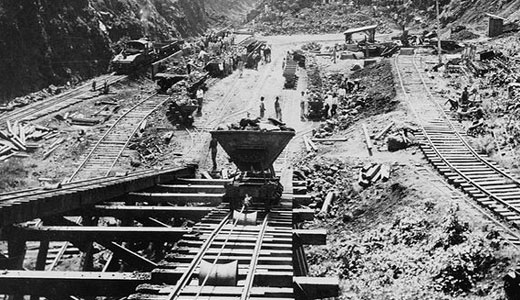
On August 15, 1914, the Panama Canal officially opened, after 32 years of construction and an estimated 28,000 worker deaths.
The 51-mile canal, an engineering and construction marvel, connects the Atlantic and Pacific oceans. It became a major strategic and economic asset to the U.S., and revolutionized world shipping patterns. It removed the need for ships to travel the long and dangerous route around Cape Horn, at the southern tip of South America. The canal saves about 7,800 miles on a sea trip from New York to San Francisco.
More than 75,000 men and women worked on the canal in total. At the height of construction, there were 40,000 workers working there. One of the biggest challenges was cutting through the rocks of the Continental Divide. Six thousand men worked in the cut, drilling holes and putting in 60,000,000 pounds of dynamite to break up the rock.
The canal was originally a French project, and Panama was originally part of Colombia. Construction began on January 1, 1882. By 1888 the labor force numbered about 20,000, nine-tenths of them Afro-Caribbean workers from the West Indies. There were also French engineers and others. The construction difficulties were enormous. But the most serious problem was tropical disease, particularly malaria and yellow fever. The death toll between 1881 and 1889 was estimated at over 22,000.
The U.S. got control of the project in 1904 under President Theodore Roosevelt, after a U.S.-promoted revolt in Colombia led to creation of Panama as a separate country. Additional workers were recruited from the West Indies, Italy and Spain, as well as the U.S. According to hospital records, 5,609 workers died from disease and accidents during the U.S. construction era.
The U.S. finally handed over control of the canal to Panama on Dec. 31, 1999.
Photo: Wikipedia










